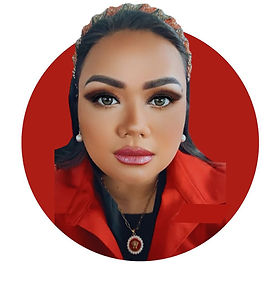Panda Cub House Family
Pedagogical Leaders
PEDAGOGICAL LEADERSHIP
Pedagogical leadership is best understood by describing what leaders do in practice. Let’s look at the following roles and responsibilities of a pedagogical leader. Pedagogical leadership is kind of a combination of teaching, learning, coaching, mentoring, role modeling and of course, building relationships.
-
Pedagogical leaders support a practice of relationships, creating a culture of learning and sharing, not silos and competition. Relationships are always first on their mind when it comes to planning, organization, and decision making. They recognize that we cannot do this work without others.
-
Pedagogical leaders create transparency and increase communication and team members’ confidence and competence. Ideas, issues, decisions, and solutions are openly shared and discussed.
-
Pedagogical leaders promote thinking, reflection, inquiry, learning, collaboration, and risk-taking. These actions relate not only to the pedagogy but also to daily practice and operations within a program.
-
Pedagogical leaders create a ‘space’ where new possibilities can be explored and realized. Team members engage in the construction of knowledge rather than the reproduction of knowledge.
-
Pedagogical leaders work alongside educators to think and reflect on their role with children and families in deep and meaningful ways.
-
Pedagogical leaders work alongside educators so that they can be thoughtful and intentional in their practice.
-
Pedagogical leaders promote engagement through reflective practice and dialogue.
-
Pedagogical leaders recognize the strengths of all educators and empower others to use their strengths as they move toward shared responsibility or shared leadership.
-
Pedagogical leaders are committed to active listening or listening attentively to what others are saying.
-
Pedagogical leaders create space for thinking and conversation with and between educators.
-
Pedagogical leaders encourage educators to know one another as valued colleagues.
-
Pedagogical leaders use a variety of ways of communicating to ensure that team members are informed and to encourage communication amongst the team.
-
Pedagogical leaders are open to hearing new ideas and ways of doing things within the program. They ask questions, discuss situations, and share their thoughts. Decision making is collaborative.
-
Pedagogical leaders support educators as they learn, explore, and imagine what this new “space” can be. They value each educator’s contributions.
-
Pedagogical leaders will spend time with educators in playrooms to observe, support, question, and imagine together. Physical spaces such as the staff room and shared reflection spaces send the message that thinking together is valued.
-
Pedagogical leaders share the program/centre/agency vision, ensuring that all members of the team know where they’re going and what is valued.
-
Pedagogical leaders accept and offer feedback to promote the ongoing process of reflecting thinking.
Ways to Support Collaboration
Pedagogical leaders build collaboration by:
Allowing leadership to emerge
They let go of the need to be in control because they trust in the vision and the people. Roles and responsibilities shift as the nature of the work changes, and leadership emerges according to what is required.
Understanding the early learning community needs and landscape
Because they are always learning, they are interested in a wide variety of topics. Not only do they understand their role, but they also keep abreast of events and ideas outside their own area of expertise in order to see trends and possibilities.
Living in the land of curiosity
Instead of seeking quick answers, they consider the larger picture and long-term implications. They ask good questions that open up possibilities and that help people find their own solutions. They seek information from multiple sources.
Asking for support
Not only are they willing to ask for help, but they are also not afraid to be vulnerable and fully human. They know their limitations and what they don’t know, and they are willing to rely on others for support.
Genuinely caring about people
They respect people as fellow human beings and care about their health and well-being. They connect with people at a personal level, regardless of their role.
Knowing who they are
They earn respect and trust through the integrity of their character. They hold themselves accountable for the organization and are willing to take a stand and make tough decisions when necessary.
Creating an infrastructure for sharing information and learning
They support an open flow of information and the distribution of power and decision-making. They make full use of all tools to open communication channels, from in-person meetings to creative uses of technology to engage in conversation at a distance.
Supporting dialogue
They bring people together to engage in dialogue around mutual concerns. They provide opportunities to develop cultural awareness and communication skills so people can engage in productive dialogue and creative problem-solving.
Supporting creative solutions, not compromise
They are not afraid of conflict. They equip those involved in disagreements to manage it themselves with the mandate to seek creative solutions aligned with the vision that benefits the organization as a whole.
Seeking out diversity.
They celebrate differences and use diversity as a strategic advantage. They foster innovation through a diverse workforce and bring people with diverse perspectives together to find creative solutions.
Removing boundaries while maintaining separateness
Not only do they collaborate internally, they collaborate with other organizations. (In other words, other communities are respected, even when competing, and seen from a bigger picture as part of an even larger community.)









